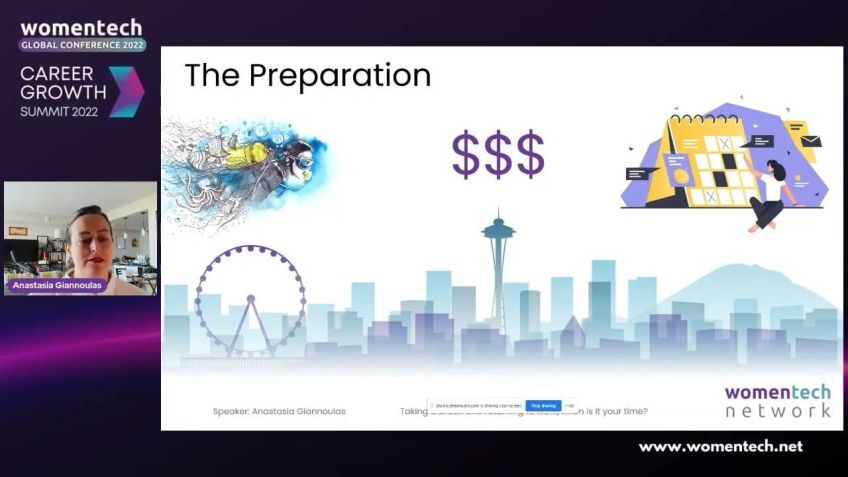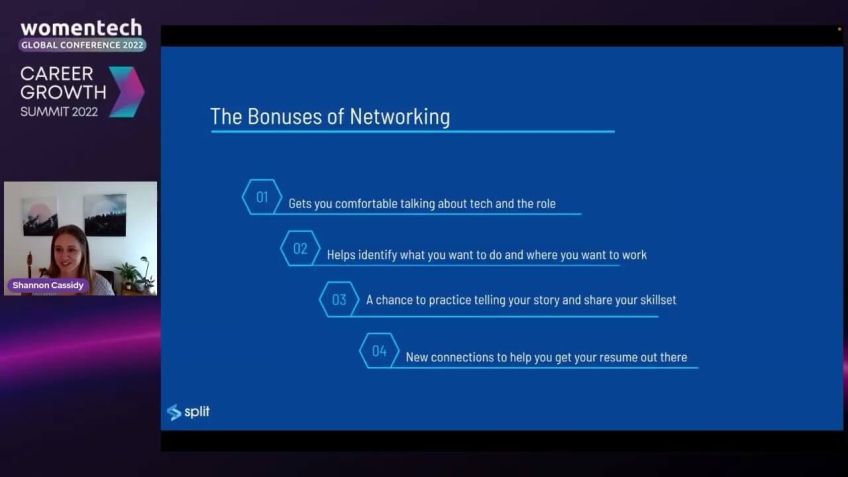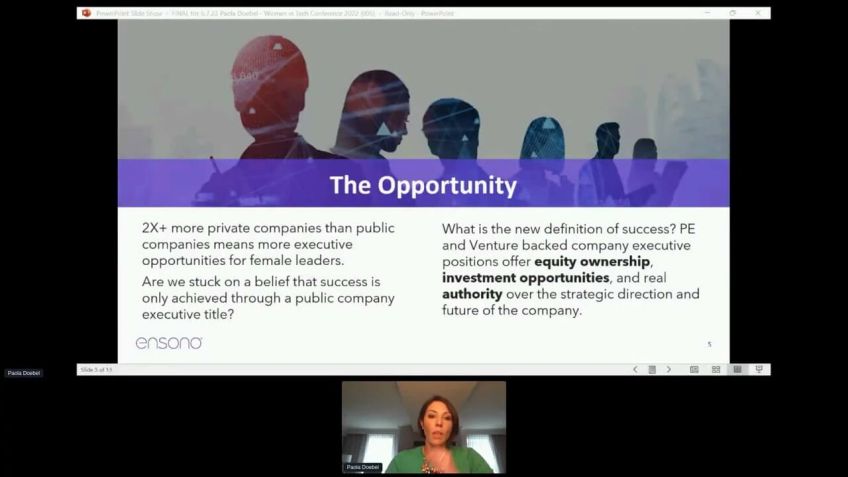How to apply engineering principles to leadership by Vatsala Sarathy
Reviews
Transitioning from Engineering to Leadership Positions: A Journey of Growth
Hello everyone! My name is Villa Sarti and as a current managing director of Finance and Technology at Stanford University's Executive Education Department, I have a unique story to share with you about my journey from an engineering role to a leadership one.
Understanding The Difference Between Engineers and Leaders
In my early career, I was an engineer, happiest when working with systems, and spending 75% of my time interacting with tools. But, everything changed when I transitioned into a leadership role, finding myself spending 95% of my time dealing with people, making decisions, reflecting, and sharing information. The tectonic shift in my role and its responsibilities left me feeling lost and unsure of how to best apply my skills to my new position.
However, after a detailed self-analysis, I discovered something: Both the engineer and the leader are builders. The engineer uses tools to build software systems, cars, homes, etc., while the leader uses people to build culture, values, a vision, and trust. Recognizing this common ground eased my anxiety and gave me the confidence to embrace my new role.
Adapting the Engineer’s Mindset to Leadership: The Role of Feedback Loops
The key to making a successful transition, residing not only in recognizing the common ground but also in learning how to adapt engineering principles to leadership.
To this end, I developed a new approach, based on the concept of a feedback loop – a simple yet powerful idea where an input triggers an output, controlled by a sensor and an actuator. Applying this concept to communication, I developed three different models:
1. Being Your Own Sensor and Actuator
In this approach, you observe your communication and adjust your behavior based on the responses and feelings of others. This continuous learning and adaption can significantly enhance your interpersonal skills and communication efficiency.
2. Building an Advisory Board
An advisory board can objectively observe and provide feedback on your communication. This model allows you to not carry all the responsibilities of the communication process, enabling you to focus more on adjusting your communications as per feedback.
3. Hiring a Leadership Coach
A leadership coach helps you align your actions with your values, enabling you to have authentic communication and be a true, honest leader.
Conclusion: Takeaways From My Journey
My journey has taught me that:
- Going into any communication with a clear purpose is crucial for successful leadership.
- Developing your feedback loop system can help simplify and improve your communication.
- Embrace your new role with confidence, knowing that your experience and training as an engineer can help you in constructing your leadership style.
Finally, remember that you can still build systems as a leader, but instead you're working with people and part of your job is to build organizations, companies, and visions. If you have any questions, comments, or insights, feel free to email me or connect with me on LinkedIn. Thank you for taking the time to read this article and I look forward to connecting with you.
Video Transcription
Hello, everyone. I hope you're having a good time at the conference.My name is Villa Sarti and I am going to spend the next 10 minutes or so with you all and take you through a little bit of a journey that I had as I transitioned from being an engineer and went into a leadership role. So before we get started with my slides, I wanted to ask you a question if you can put in the chat, whether you are in an engineering role currently or in a leadership role. I give me a picture of where you're coming from and how to tweak the presentation. I see Rachel, you're in leadership, Mary, Assistant manager, Tech tech PM. So it looks like there are a few who are in the engineering role, trying to move into a leadership role and some who are in the um in leadership role, trying to manage the transition. So a little bit about myself and let me start by sharing the screen. So I'm a person who started off as an engineer and then moved into different roles over a period of 20 years and took on different roles. And finally I am at a place where I think I manage a bunch of things.
Currently, the managing director of Finance and Technology at Stanford University's Executive Education Department. For me, the biggest challenge was when I actually moved away from engineering and started taking all the different roles. And as I was going through that, it was a very tumultuous period for me because I really felt at a loss. I felt like I did not have a grasp of things. I did not know how to use what I knew how to do well to what I was going to be doing. And I felt like I did not have any foundation or skills to take me to where I wanted to be. So I did a small experiment and I wanted to find out why I was feeling the way I was feeling. So I said to myself, I'm going to take stock of all the activities that an engineer would do on a normal day and compare it with what a leader might do. And so let me share what I found as I was going through that exercise a day in the life of an engineer might look something like this.
This is a word cloud I built and what you can see from this is that an engineer builds, they build systems and tools, work with tools. And for me, I was really happiest when I was doing that, this was my happy place and I felt very confident and very productive. Then I started looking at the activities that I was doing as a leader and that work cloud looks something like this. It does not look very similar to the other one, does it? So here it appears that there is a lot of decision making, reflection, information gathering and information sharing. So to help myself understand the differences, I try to put them together side by side. And I asked myself this question that I'm going to ask you as well. Then the question is, what do you notice about these two workloads? As I thought about it? What I realized was the word cloud on the left is an inverse of the word cloud on the right. Almost the exact opposite where, where the person is spending a little bit of time with decision making and influencing that is what the uh leader spends most of their time.
Put another way I wanted to see how much of time does the leader spend with other human beings, information sharing gathering, reflecting, um informing and so on. So what do you think is the percentage of time that the leader spends in interpersonal activities? Is it 20%? 40% 60% Rachel thinks it's 90% and she's not wrong. If you look at this chart, you see that the leader spends about 95% of their time working with people and only 5% of their time with tools whereas three quarters of a time for an engineer is working with tools and only 25% with other um human beings. And so I could sense why I felt the way I felt, why I felt like everything that I was doing would not be applicable in what I was going to be doing. So this was a good revelation, but it did not really, really help me um figure out my next move. So I tried to look at it from a different perspective. So I asked myself, what is common between these two people? What and the work that they do? We know what the difference is. They spend a lot of time with tools or with people. But what is common? And that was the big revelation for me because I realized then that both an engineer and a leader is building and that was my happy place.
I loved building. The only difference is an engineer builds with tools, they build software systems, they may build cars, they may build homes and a leader on the other hand, builds with people, they build culture, they build values, they build a vision, they build trust. So once I felt that we were both building and my previous job was building and my new job is going to be building as well. I felt more at ease with myself. I wasn't anxious at all. I felt like this is something I can do. I love building. I know how to build. And so now I just have to think about building it differently and building it for different people. So with this information, armed with this information, I sat back and I said, now I'm confident I can do this job. What do I need to know? So I needed to figure out how to adapt some of the principles and foundations in you as an engineer into my new role as a leader. And I have tried several different techniques and many of them have worked and I'll share some of them with you and I've done a lot of this keeping it simple random sampling. But what I really want to talk to you about today is the simplest of all tools that have used and frameworks that actually gave me the biggest leverage. And that is using the feedback loop. The feedback loop is simple yet powerful concept.
We know we see it in everyday life. Thermostat is a great example uh where you know, there is an input and an output and a sensor and an actuator that controls what the output should be. Then I started thinking about how do I use this concept in my communication? How can I adapt it? Because for me, I needed a system communication. Usually people say it is a fuzzy thing. I can't work with fuzzy. I needed something that was concrete and had structure and parts. And so I decided to map this into my communication model and I will show you three different ways I did it and I want you to think about what you might be able to do using something like this. The first thing I did was figuring out what my actuators and sensors were. And for my first situation, I said I'm going to be the sensor and I'm going to be the actuator. I am going to be the observer of the communication and take that as my new input and then I'm going to modify my behavior so that my next output is closer to my desired outcome, the 72 degrees on the thermostat.
So being your own sensor and actuator will really help you understand how to communicate better and you will constantly keep improving your communication with others based on what they are feeling. Are they angry? Are they anxious and so on? And what you're feeling? Are you feeling authentic?
Are you feeling nervous? You can then change your communication? The second model that I came up with is to have an advisory board. What is an advisory board? And why do you need it? It helps you relieve yourself of all the parts of this process. You don't have to be the sensor and actuated at the same time and be the communicator. At the same time, an advisory board can step back and have an objective look and give you feedback. So they are the sensors and then you can decide how you want to adjust your communication that helped me tremendously. And the last 1 may be a little counterintuitive, but it helped me the most. And that was to have a leadership coach. And the difference here is they help with your activation, they help you think about who you are as a person. How do you want to show up as a leader? What, what is the set of values that are nonnegotiable? And how can you make sure every action that you take is in sync with your values? And once you have that going, you will be able to have an authentic communication, be a true and honest leader. So these are some of the things they're not new, but the way I mapped it to an engineering system and a concept was what helped me feel like I can tackle it.
So I want to give you a couple of takeaways and a couple of things to think about. The first thing is always go into any conversation or communication with a purpose the minute you have a desired outcome and you know what you want, you will be able to adapt and using that feedback loop. That is just being mindful and purposeful. The second thing is build your own mapping of the feedback loop system and create your own way of thinking about it in terms of actuators and sensors and input and output what can be measured, what cannot be measured. How do you change things when you observe something. So come up with your own system and when you put structure to it, you will find that it's not that hard. And lastly go to this new role with confidence, know that you're still going to be building systems, but you're going to be building it with people, you're going to be building organizations, companies missions and you'll, you have a vision that you want to make into a reality.
You can do all of that because that's all building and for you, you have so much you have trained in and so much experience as an engineer that you can take those and think about them creatively and map them to your new models and that will become your new leadership style. I think I'm a little bit over time here, but I really want to thank you all for being here. This was just great for me to put together and share with you. So I I'm looking forward to connecting with you if you have questions or comments, ideas, what worked and what didn't work. Please contact me. I have my email address and my linkedin. I put it back again in the chat and I hope to see you soon. Thank you.






No comments so far – be the first to share your thoughts!